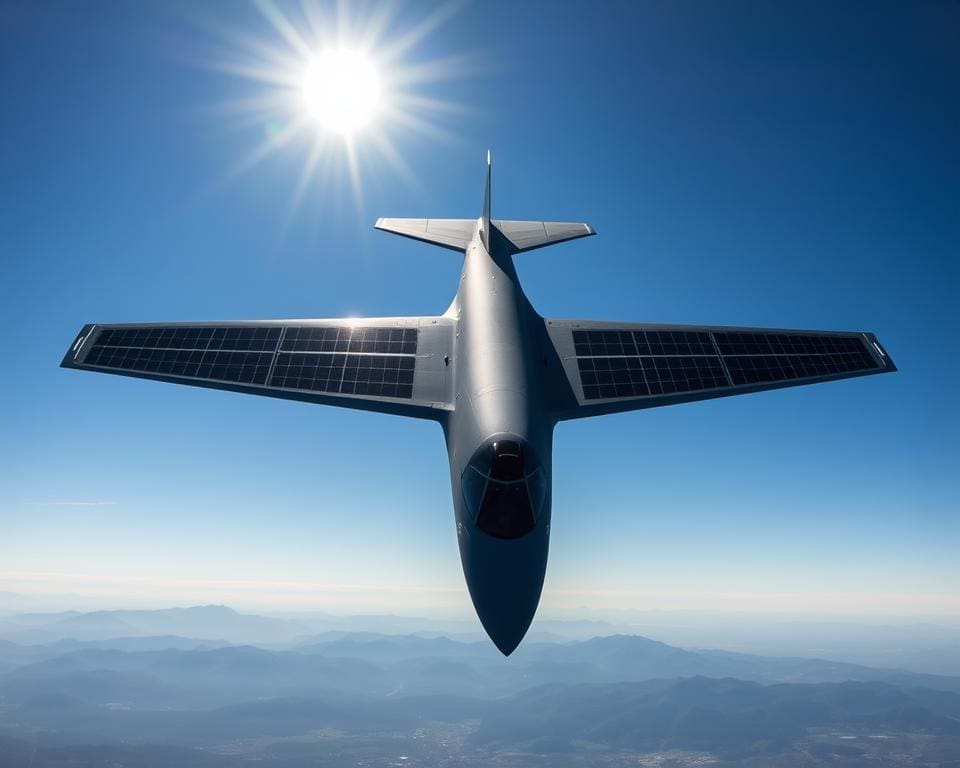The innovative realm of solar-powered aircraft is rapidly transforming the landscape of military strategy, particularly in the context of long-duration military missions. These groundbreaking technologies not only enhance operational capabilities but also underscore the critical importance of sustainable aviation within defence applications. By harnessing renewable energy, military organisations can align their missions with global sustainability goals, paving the way for a greener future.
Key players in this evolution include pioneering organisations like NASA and various military aeronautical units, working collaboratively to advance these green technologies. The integration of solar power into defence systems exemplifies a forward-thinking approach, showcasing how military necessities can intersect with environmental stewardship.
The Rise of Solar-Powered Aircraft in Military Applications
The evolution of aviation technology manifests significantly within military contexts, especially as the demand for environmentally conscious practices intensifies. Solar-powered aircraft emerge as key players, embodying the principles of sustainable aviation. These aircraft promise considerable reductions in greenhouse gas emissions while simultaneously enhancing operational capabilities.
Understanding Sustainable Aviation
Sustainable aviation focuses on minimizing the environmental impact of air travel while ensuring effective military applications. The integration of solar-powered aircraft into military operations aligns with the broader goal of decreasing carbon footprints and enhancing fuel efficiency. This innovative approach paves the way for a new era where operational readiness meets ecological responsibility.
The Role of Renewable Energy in Defence
Renewable energy strategies within the defence sector are crucial as they respond to the pressing challenges posed by climate change and resource scarcity. Countries like the United Kingdom are committing to renewable energy solutions within their defence strategies, demonstrating a proactive stance in adapting military methods. Programmes that incorporate green technologies aim to ensure operational effectiveness without compromising sustainability.

Solar-Powered Aircraft: Long-Duration Military Missions
Long-duration military missions represent a transformative approach to aerial warfare, showcasing the numerous benefits of solar aircraft. These innovative machines provide enhanced operational capabilities, allowing forces to maintain a sustained presence in critical zones without the typical logistical challenges. The integration of solar technology not only reduces operational costs but also diminishes the reliance on traditional fuel resources.
Benefits of Long-Duration Missions
The benefits of solar aircraft for long-duration missions are multi-faceted. Firstly, the ability to conduct extended surveillance enhances situational awareness for military operations. Persistent flight times facilitate real-time monitoring of areas that may be challenging to access with conventional aircraft. This capability leads to improved intelligence-gathering and timely responses in dynamic environments.
- Reduced operational costs: Solar-powered flights lessen the burden of fuel expenses, freeing resources for other pressing military needs.
- Decreased logistical burdens: These aircraft require less frequent refuelling, simplifying supply chain management in remote locations.
- Minimised environmental impact: Utilising renewable energy sources aligns military operations with sustainable practices.
Case Studies on Solar Military Aircraft
Examining case studies on solar military aircraft reveals the promising future of this technology. The Zephyr High Altitude Pseudo-Satellite stands out as a notable example, demonstrating remarkable endurance and versatility in military applications. Capable of flying for weeks, the Zephyr serves as a platform for communication and surveillance, redefining expectations for unmanned aerial systems.
In a different vein, the Solar Impulse 2 project illustrates advancements in solar aviation technology that can be applied to military contexts. This aircraft’s successful circumnavigation of the globe without fuel showcased the potential for long-duration missions. Operational performance in this initiative indicates a pathway toward integrating solar solutions into defence strategies.
Unmanned Aerial Vehicles (UAVs) and Solar Power
The integration of solar power within unmanned aerial vehicles is reshaping military aviation. Recent advancements in UAV technology demonstrate how innovations drive the effectiveness and sustainability of military operations. Improved solar cell efficiency and advanced battery systems have significantly enhanced flight endurance, allowing for prolonged missions without the typical constraints of fuel logistics. This utilisation of renewable energy aligns with the growing emphasis on clean technology within defence sectors.
Innovations in UAV Technology
Various innovative solutions are emerging in the field of UAV technology, paving the way for more efficient military operations. Key advancements include:
- Enhanced solar cell materials that maximise energy absorption.
- Integration of lightweight battery systems optimised for solar recharging.
- Advanced flight control systems that improve navigation and operational efficiency.
These developments not only extend the operational range of unmanned aerial vehicles but also contribute to a reduced carbon footprint, embodying the principles of clean technology.
The Impact of Clean Technology on Military Strategy
Clean technology is transforming military strategy by offering new capabilities for intelligence and reconnaissance missions. Solar-powered UAVs allow for:
- Extended surveillance durations, enhancing situational awareness without the need for frequent refuelling.
- Operations in remote areas where traditional logistics supply is challenging.
- A reduction in reliance on fossil fuels, aligning military operations with broader environmental objectives.
The shift towards solar power within unmanned aerial vehicles underscores a commitment to sustainability and operational efficiency. As the military sector increasingly embraces these innovations, the potential for redefining mission capabilities becomes apparent.
Challenges and Solutions for Solar-Powered Aviation in Military Contexts
The integration of solar energy into military aviation presents a unique set of challenges. These challenges in aviation stem from various technical limitations that can hinder the full potential of solar-powered aircraft. Understanding and addressing these issues is essential for the advancement of sustainable military operations.
Technical Limitations of Solar Energy in Aviation
Several factors contribute to the technical limitations of solar energy in aviation. These include:
- Weight constraints of solar panels and additional batteries, which can affect the overall payload capacity.
- Energy density challenges that limit the amount of energy stored and available for flight.
- Atmospheric variables that impact the efficiency of solar panels, affecting energy harnessing during certain weather conditions.
Strategies for Overcoming Challenges
To successfully integrate solar energy into military contexts, innovative strategies must be explored. These strategies involve:
- Developing hybrid systems that combine solar power with traditional fuel sources for enhanced reliability.
- Investing in improved energy storage technologies to maximise energy retention during flight.
- Encouraging collaborative efforts between government and private sectors to boost research and development in solar aviation capabilities.
Ongoing research initiatives are actively targeting these challenges, showcasing a promising future for the adoption of solar-powered aircraft in military missions.
The Future of Solar Energy in Military Missions
The future of solar energy in military missions appears promising as advancements in renewable technology continue to evolve. Defence sectors around the globe are now recognising the critical importance of incorporating sustainable strategies that not only enhance operational efficiency but also align with global climate imperatives. The integration of solar-powered aircraft could fundamentally reshape how military operations are conducted, emphasising eco-friendliness without compromising effectiveness.
With nations potentially collaborating to share breakthroughs in solar aviation, a collective push towards sustainability is becoming increasingly evident. These partnerships may lead to innovative solutions that enhance the capabilities of defence forces while reducing reliance on traditional fossil fuels. The military’s gradual shift towards incorporating renewable technologies marks a significant transformation in strategic planning, as forces adapt to a world where environmental responsibility is intertwined with operational goals.
As we look ahead, the vision of a future where solar energy plays a pivotal role in military missions is not just aspirational but achievable. With ongoing research and development, the prospect of enhanced endurance and efficiency in military aviation is on the horizon. The paradigm shift towards sustainable practices will not only redefine mission execution but also establish a legacy of responsible stewardship—setting a precedent for future initiatives within and beyond military frameworks.









